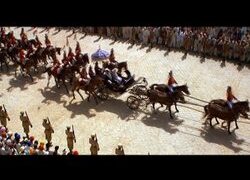E. M. Forster, one of the most influential British writers of the twentieth century, has left an indelible mark on both literature and cinema. His works, characterized by their rich and nuanced exploration of human relationships and societal norms, continue to captivate readers and viewers alike. In this article, we delve into the intriguing life of E. M. Forster, uncovering the hidden facets of his personality, his relationships, and the profound impact he had on the world of literature and cinema.
E. M. Forster’s biography: From birth to death
E. M. Forster was born on January 1, 1879, in London, England. Raised in a middle-class family, Forster’s upbringing provided him with a unique perspective on the stark class divide that characterized Victorian society. This theme of social class would later become a prominent feature in many of his works. Despite the constraints of his time, Forster pursued his passion for writing and literature, eventually attending King’s College, Cambridge.
Forster’s early works, such as “Where Angels Fear to Tread” and “The Longest Journey,” established him as a promising young writer. However, it was his novel “A Room with a View,” published in 1908, that brought him widespread acclaim and recognition. The success of this novel paved the way for Forster to explore deeper themes in his subsequent works, including “Howards End” and “A Passage to India,” which solidified his position as a literary heavyweight.
Exploring E. M. Forster’s love life and friendships
While Forster’s writings often explored human relationships, his personal life also held its fair share of intrigue. Forster’s love life was a subject of speculation, as he kept his homosexuality a secret during a time when such relationships were heavily stigmatized. His close relationship with Bob Buckingham, a married policeman, was a significant influence on his life and work. Forster’s struggles with his own identity and societal expectations undoubtedly shaped the themes of love and self-discovery that permeate his novels.
In addition to his romantic relationships, Forster maintained close friendships with other literary figures of his time, such as Virginia Woolf and T.S. Eliot. These friendships not only provided him with intellectual stimulation but also served as a source of support and inspiration throughout his career. The influence of these relationships can be seen in the depth and complexity of the characters and their interactions within Forster’s novels.
Intriguing tidbits about E. M. Forster’s life and personality
Beyond his literary achievements, E. M. Forster’s life was filled with intriguing tidbits that shed light on his unique personality. Despite his success, Forster remained a humble and modest individual, often shying away from the spotlight. He possessed a sharp wit and a keen sense of observation, which he used to craft his nuanced portrayals of society.
Forster’s love for travel was also a defining aspect of his life. His journeys to countries such as Italy and India greatly influenced his writing, providing him with firsthand experiences of the cultures and landscapes he would later bring to life in his novels. These travel experiences not only enriched his personal life but also added depth and authenticity to his literary works.
E. M. Forster’s best quotes and their significance
Throughout his career, E. M. Forster penned numerous insightful and thought-provoking quotes that continue to resonate with readers today. One of his most famous quotes, “Only connect,” encapsulates his belief in the power of human connection and understanding. This recurring theme of connection, both between individuals and between different social classes, is a central motif in many of his novels.
Another notable quote by Forster is, “We must be willing to let go of the life we have planned, so as to have the life that is waiting for us.” This quote reflects Forster’s belief in embracing change and the unpredictability of life. It encourages readers to let go of preconceived notions and embrace new opportunities, a sentiment that is reflected in the transformative journeys undertaken by many of his characters.
The main places where E. M. Forster’s books are set
E. M. Forster’s novels are not only known for their compelling characters and intricate narratives but also for the vivid settings in which they take place. Forster had a remarkable ability to transport readers to different locations, allowing them to experience the sights, sounds, and emotions associated with each place. Some of the main locations featured in his books include:
- Italy: Forster’s love for Italy is evident in novels such as “A Room with a View” and “Where Angels Fear to Tread.” These stories capture the essence of the Italian landscape and its impact on the characters’ personal growth.
- England: Forster’s native country serves as the backdrop for many of his novels, including “Howards End” and “Maurice.” Through these works, he explores the complexities of English society and the tensions between different social classes.
- India: “A Passage to India” is perhaps Forster’s most renowned novel set in India. Drawing from his own experiences during his visits to the country, Forster paints a vivid and nuanced portrayal of the British Raj and its impact on both the colonizers and the colonized.
These settings not only serve as a backdrop for the stories but also play a significant role in shaping the characters and their interactions, highlighting Forster’s keen sense of place.
A list of E. M. Forster’s best books and a brief description of each
E. M. Forster’s literary career spanned several decades, during which he produced a remarkable body of work. Here is a list of his best books and a brief description of each:
- “A Room with a View”: Set in Italy and England, this novel explores the constraints of Edwardian society and the transformative power of love.
- “Howards End”: A tale of two families from different social classes, this novel delves into themes of social class, cultural clashes, and the pursuit of personal connections.
- “A Passage to India”: Perhaps Forster’s most famous work, this novel examines the complexities of British colonialism in India and the misunderstandings and prejudices that arise between the colonizers and the colonized.
- “Maurice”: Published posthumously, this novel explores themes of same-sex love and the challenges faced by individuals in a repressive society.
- “Where Angels Fear to Tread”: Set in Italy, this novel follows the story of a young English widow who embarks on a journey of self-discovery and confronts societal expectations.
Each of these novels showcases Forster’s meticulous attention to detail, his nuanced character development, and his ability to tackle complex themes with grace and sensitivity.
The first and last books written by E. M. Forster
The first book written by E. M. Forster was “Where Angels Fear to Tread,” published in 1905. This novel set the stage for his subsequent works, laying the foundation for his exploration of social class, personal relationships, and the clash of cultures. “Where Angels Fear to Tread” received critical acclaim, establishing Forster as a rising star in the literary world.
On the other hand, Forster’s last completed novel was “A Passage to India,” published in 1924. This magnum opus cemented his reputation as a master storyteller and solidified his place in the canon of English literature. “A Passage to India” remains one of Forster’s most celebrated works, tackling themes of imperialism, racism, and the complexities of human connection.
The screen adaptation of Howards End and its impact on Forster’s legacy
One of E. M. Forster’s most beloved novels, “Howards End,” was adapted into a critically acclaimed film in 1992. Directed by James Ivory and starring Emma Thompson and Anthony Hopkins, the film brought Forster’s story to life on the big screen and introduced his work to a wider audience.
The film’s success not only renewed interest in Forster’s writings but also showcased his ability to capture the intricacies of human relationships and societal dynamics. The adaptation of “Howards End” received widespread acclaim, earning several Academy Award nominations and solidifying Forster’s status as a literary giant whose works transcend time and medium.
Other artists who inspired E. M. Forster and their influence on his work
E. M. Forster was not only influenced by his personal experiences and relationships but also by other artists and their works. One such artist was the composer Ludwig van Beethoven, whose music deeply moved Forster. Beethoven’s ability to evoke emotions through his compositions inspired Forster’s exploration of the human psyche and the complexities of human connection in his novels.
Forster was also heavily influenced by the works of Marcel Proust, particularly Proust’s monumental novel “In Search of Lost Time.” Proust’s introspective and highly descriptive style resonated with Forster, prompting him to delve deeper into the inner lives of his characters and explore the subtleties of human emotions.
Five other writers and books to read if you enjoyed E. M. Forster’s writings
If you enjoyed E. M. Forster’s writings and are looking for similar authors and books to explore, here is a list of five recommendations:
- Virginia Woolf – “To the Lighthouse”: Woolf’s stream-of-consciousness style and exploration of human consciousness make her an excellent choice for readers who appreciate Forster’s introspective approach.
- Kazuo Ishiguro – “The Remains of the Day”: Ishiguro’s novel, like Forster’s works, delves into themes of love, duty, and the impact of societal norms on individual lives.
- Zadie Smith – “White Teeth”: Smith’s debut novel captures the complexities of multicultural London and weaves together multiple storylines, much like Forster’s exploration of diverse characters and their interactions.
- Jean Rhys – “Wide Sargasso Sea”: This prequel to Charlotte Brontí«’s “Jane Eyre” offers a fresh perspective on a classic story, echoing Forster’s interest in revisiting and reimagining established narratives.
- Jhumpa Lahiri – “The Namesake”: Lahiri’s novel explores themes of identity, cultural assimilation, and the immigrant experience, resonating with Forster’s fascination with the complexities of human relationships and personal growth.
Creating a buying guide and gift ideas for E. M. Forster fans
If you or someone you know is a fan of E. M. Forster, consider the following buying guide and gift ideas:
- Complete Works Collection: A comprehensive collection of Forster’s novels and short stories is the perfect gift for devoted fans or those looking to delve into his works for the first time.
- Literary Tours: Organize a trip to the locations that inspired Forster’s novels, such as Italy and England, to provide an immersive experience for fans.
- Forster-inspired Art: Look for artwork inspired by Forster’s novels, such as paintings or illustrations capturing the essence of his stories, to adorn the walls of a dedicated fan’s home.
- Literary Merchandise: From mugs to tote bags adorned with quotes from Forster’s works, there is a wide range of literary merchandise available for fans to show their love for the author.
Conclusion: E. M. Forster’s enduring legacy and continued relevance
E. M. Forster’s life and work continue to captivate readers and viewers, transcending time and societal changes. His novels, with their exploration of human relationships, societal norms, and the complexities of personal growth, remain as relevant today as they were during Forster’s time. By delving into his biography, love life, and friendships, we gain a deeper understanding of the man behind these timeless works.
Through his richly descriptive writing, nuanced characters, and thought-provoking themes, Forster has left an indelible mark on both literature and cinema. His legacy lives on in the hearts and minds of readers and continues to inspire new generations of writers and artists. Whether you are a lifelong fan or have yet to discover his works, E. M. Forster’s enduring legacy is sure to leave a lasting impact on all who seek to explore the intricacies of the human condition.












